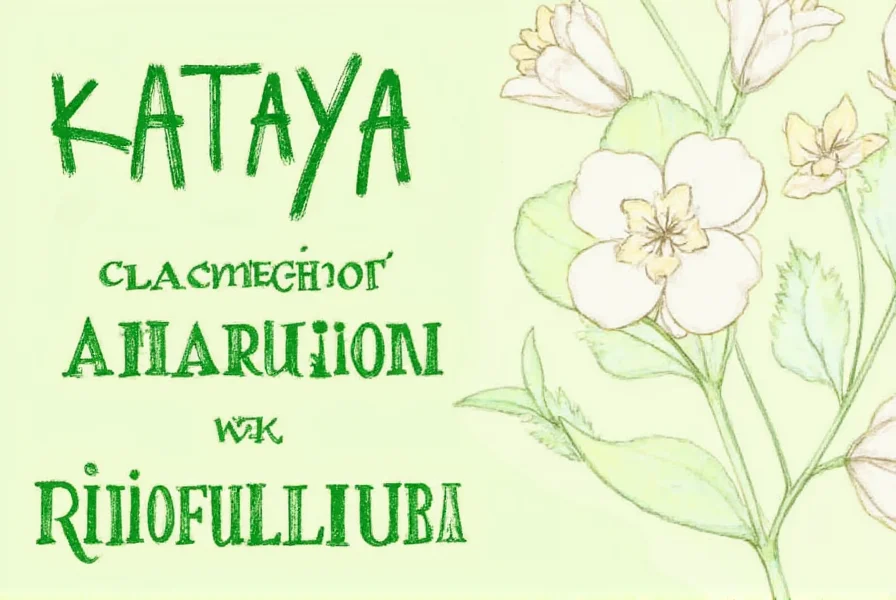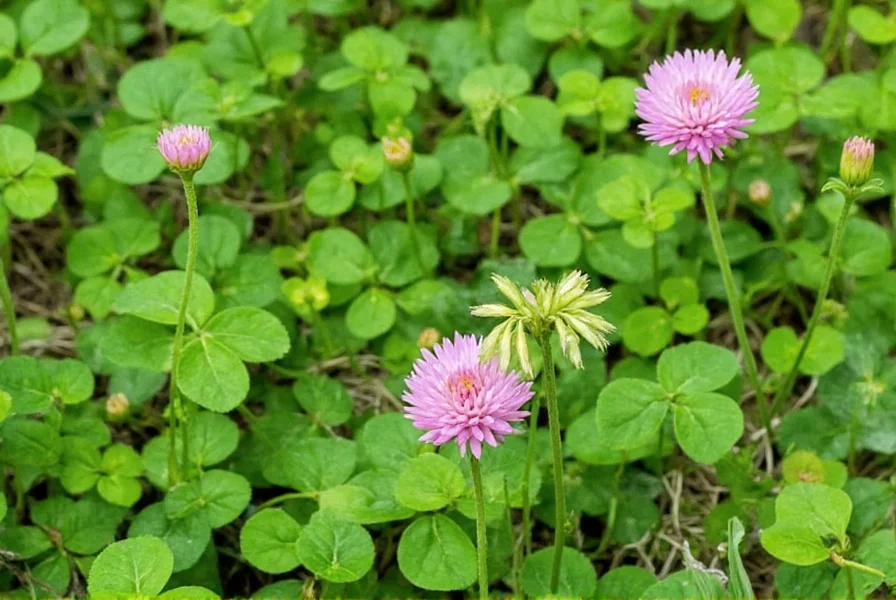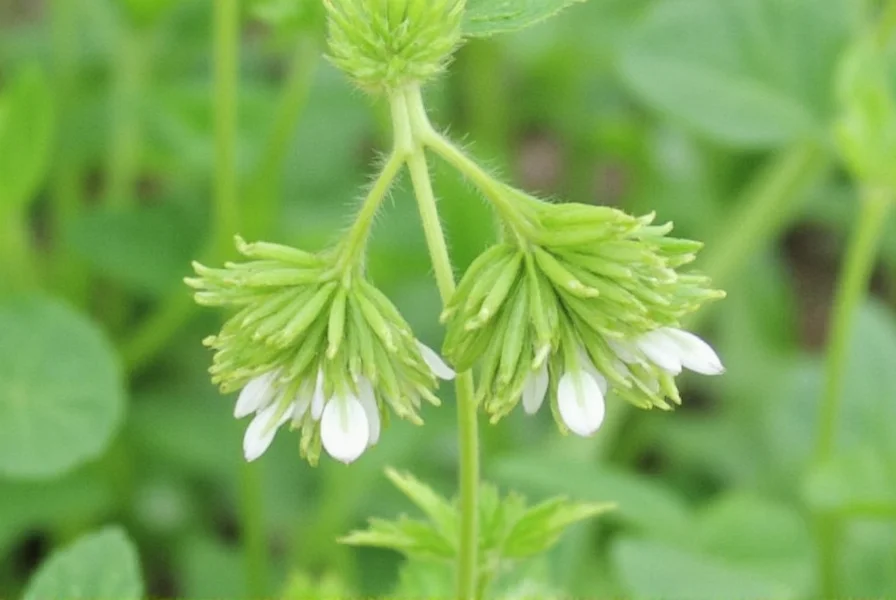Many gardeners and farmers searching for kataya clover information encounter confusion due to regional naming variations. The plant formally known as Kura clover (Trifolium ambiguum) goes by the name 'Kataya' in parts of Japan, Korea, and other Asian countries where it's cultivated for agricultural purposes. Understanding this naming distinction is crucial when researching kataya clover planting requirements or kataya clover benefits for pasture.
Botanical Classification and Origin
Trifolium ambiguum belongs to the Fabaceae family and originates from the Caucasus region, spanning from Eastern Europe to Western Asia. Unlike common white clover (Trifolium repens), Kura clover develops extensive rhizomes that create a dense, persistent stand. The kataya clover scientific name confusion stems from regional agricultural practices where local names override botanical terminology.

Physical Characteristics of Kataya Clover
This perennial clover variety features:
- Deep white taproot with extensive rhizome system
- Trifoliate leaves with oval leaflets (1-3 cm long)
- Pink to white flower heads appearing in early summer
- Mature height of 15-30 cm when unmowed
- Exceptional winter hardiness (USDA zones 3-8)
The rhizomatous growth habit distinguishes kataya clover characteristics from other clover species, allowing it to spread vegetatively and form dense mats that resist invasion by weeds.
Growing Requirements for Successful Establishment
For those researching how to grow kataya clover, understanding its specific needs proves essential:
| Factor | Optimal Conditions | Tolerance Range |
|---|---|---|
| Soil pH | 6.0-7.0 | 5.5-7.5 |
| Soil Type | Well-drained loam | Moderate clay tolerance |
| Moisture | Consistent moisture | Moderate drought tolerance after establishment |
| Sun Exposure | Full sun | Partial shade (reduced yield) |
Unlike many clover varieties, kataya clover establishment process requires patience. The plant focuses energy on rhizome development during the first year, with minimal top growth. Farmers practicing kataya clover for pasture improvement typically see full stand development in the second or third growing season.
Agricultural and Ecological Benefits
The value of kataya clover extends beyond simple forage production. When evaluating kataya clover benefits for soil health, consider these significant advantages:
- Nitrogen fixation - Adds 100-150 lbs of nitrogen per acre annually
- Erosion control - Rhizome network stabilizes soil on slopes
- Drought resistance - Deep roots access moisture unavailable to shallow-rooted plants
- Persistence - Stands remain productive for 10-15 years with proper management
- Forage quality - Higher protein content than many grasses (18-22% crude protein)
Research on kataya clover livestock nutrition value shows it provides excellent digestibility (65-75%) and palatability for cattle, sheep, and goats. Unlike some legumes, it carries minimal risk of bloat when managed properly.

Practical Cultivation Considerations
Those implementing kataya clover planting techniques should note these critical factors:
Seeding Requirements
Use 2-3 lbs of pure live seed per acre when establishing new stands. The small seeds (250,000 seeds/lb) require shallow planting (1/4 to 1/2 inch deep). Many farmers achieve better results with kataya clover no-till establishment into existing vegetation rather than conventional tillage.
Management Practices
Successful kataya clover pasture management involves:
- Initial weed control through mowing (avoid herbicides during establishment year)
- Rotational grazing with 25-30 day rest periods
- Limited nitrogen fertilization (excess nitrogen reduces nitrogen fixation)
- Soil testing every 2-3 years to maintain proper pH and nutrient balance
Common Challenges and Solutions
While researching kataya clover problems and solutions, growers frequently encounter these issues:
- Slow establishment - Requires patience during first growing season
- Weed competition - Control through strategic mowing during establishment
- Winterkill - Rare but possible in extremely cold regions without snow cover
- Insect pressure - Generally resistant to most pests that affect other legumes
Unlike white clover, kataya clover disease resistance is notably strong, with few serious pathogens affecting established stands. The primary challenge remains the initial establishment period, which requires careful management to ensure success.
Comparing Kataya Clover with Similar Species
Understanding the differences between kataya clover versus white clover helps determine appropriate applications:
- Growth habit - Kataya spreads via rhizomes; white clover via stolons
- Longevity - Kataya persists 10-15 years; white clover typically 3-5 years
- Drought tolerance - Kataya superior due to deeper root system
- Shade tolerance - White clover performs better in partial shade
- Establishment speed - White clover establishes faster initially
For agricultural operations considering kataya clover alternative forage options, the long-term benefits often outweigh the slower establishment period, particularly in areas with moderate drought conditions.
Practical Applications Across Farming Systems
The versatility of kataya clover makes it valuable for various agricultural applications. When exploring kataya clover uses in sustainable farming, consider these implementations:
- Permanent pastures - Provides consistent forage over many years
- Alley cropping - Grows between tree rows in agroforestry systems
- Erosion control - Stabilizes soil on slopes and waterways
- Organic systems - Natural nitrogen source reducing fertilizer needs
- Habitat corridors - Supports pollinators and beneficial insects
Research into kataya clover economic benefits for farmers demonstrates significant long-term savings from reduced fertilizer costs and extended pasture productivity compared to short-lived forage options.
Final Considerations for Growers
When evaluating kataya clover suitability for your farm, consider both the long-term benefits and initial establishment challenges. The plant's ability to fix nitrogen, prevent erosion, and provide high-quality forage over many years makes it a valuable investment for sustainable agricultural systems. Proper soil preparation, weed management during establishment, and appropriate grazing practices determine ultimate success with this versatile legume.
For those researching kataya clover information sources, consult agricultural extension services in regions where the plant is commonly grown, as they provide the most relevant, location-specific guidance for successful implementation.











 浙公网安备
33010002000092号
浙公网安备
33010002000092号 浙B2-20120091-4
浙B2-20120091-4